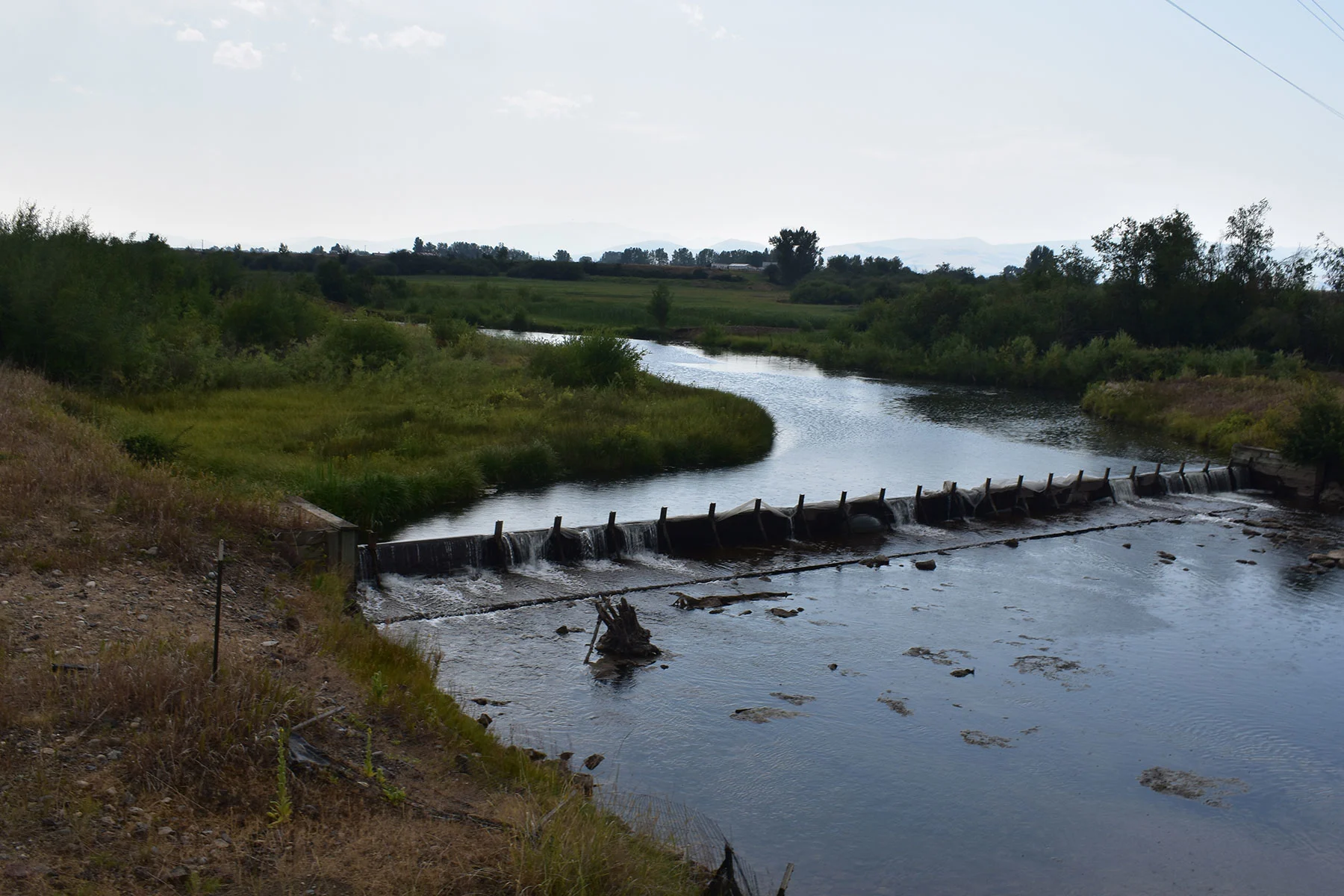The bumpy gravel road narrowed as the government-issued F150 I was riding in came crawling to a stop. I was squeezed into the crew cab next to Casey Hackathorn, the Montana Director of Trout Unlimited, who'd been showing me a series of innovative fish passage improvement projects in the Upper Clark Fork drainage along Warm Springs Creek, near Anaconda, Montana. We got out of the truck and began walking toward the next project on the day's docket when a state fisheries biologists who'd been traveling with our caravan said he could see a 24-inch bull trout in a tiny gin-clear creek that was hidden from the road by a stand of lodgepole pines.
"I think he swam off," said Montana Fish Wildlife & Parks (FWP) biologist Caleb Uerling, who was crouched down and straining his eyes toward the small rushing creek by the time I arrived at the stream bank. "He was a big one."
Bull trout are one of the West’s most threatened native trout species. Like the one Uerling spotted that day, they tend to get big because they’re exceptional predators and voracious feeders—so long as their unique habitat requirements are met and they’re not outcompeted by non-natives like brown and brook trout.
In parts of the northern Rockies that still have viable bull trout habitat, the fish are known for migrating great distances—up to 150 miles to spawning grounds in some cases. And among those migrating populations, fish weighing 30 pounds or more aren’t unheard of.
In Montana, bull trout used to be abundant west of the Continental Divide. That changed with early settlement, when fish and game began stocking non-natives and putting bounties on the bulls, which preyed heavily on hatchery-reared fingerling trout. Today, the species’ range has been reduced to a fraction of its former glory. The fish are now isolated to a handful of drainages in the Clark Fork, Blackfoot, and Bitterroot River systems, and they’ve been listed as threatened under the Endangered Species Act for more than 25 years.

Reconnecting Bull Trout Habitat
Conservation groups, state fish and game agencies, and federal land managers have been striving to restore bull trout populations in Montana and beyond for decades. But it’s a tall order because the fish require cold, sediment-free water—and fully connected tributaries to migrate through. Trout Unlimited says it recently received millions of dollars in both federal and state funding (via the Bipartisan Infrastructure Law) that’s allowing the organization to focus on that latter requirement: stream connectivity.
“The goal here is to restore the migratory life history of Montana's bull trout,” Hackathorn said. “They have to have good genetic diversity to persist into the future.”
In order to do that, Hackathorn is spearheading a series of innovative fish passage projects in Warm Springs Creek and on the Upper Clark Fork River. Working alongside funding partners like the Montana's Natural Resource Damage Program (NRDP), TU has hired local contractors to construct concrete traps next to dams on Warm Springs Creek that currently block bull trout migration. After they’re caught in the traps, the migrating bull trout will be physically transported to spawning grounds upstream by FWP fisheries biologists like Uerling. Trapped non-natives, like brook and brown trout, will be returned to the downstream stretches.

TU and NRDCP are also working to rebuild outdated diversion dams along the Upper Clark Fork River. These structures are used to divert water out of stream beds for sprinkler systems in hay fields and for other agricultural purposes. When poorly constructed, they can cause streams to dry up and block trout from moving upstream altogether.
We toured such diversion dam along the Clark Fork, known as a pin-and-plank style diversion, that stretched heavy-duty plastic sheeting across the entire width of the river, completely blocking any upstream movement. TU plans to rebuild the diversion in a way that will allow fish to move upstream while still providing water to nearby irrigators.
Read Next: Angler Catches World Record Tiger Muskie on His Own Handmade Lure
All told, TU and partners plan to spend a total of $3 million over the next three years reconnecting 64 miles of critical bull trout habitat in Warm Springs Creek alone, and similar projects are underway on the Upper Clark Fork. "This is the cleanest, coldest water in the Upper Clark Fork," Hackethorn said of Warm Springs Creek. "And it's the strongest remaining bull trout holdout in the drainage. I think we all recognize the immense value of Warm Springs Creek to the continued existence of bull trout in Montana."


